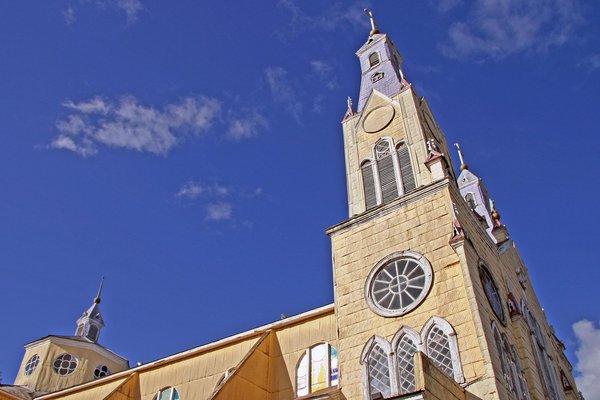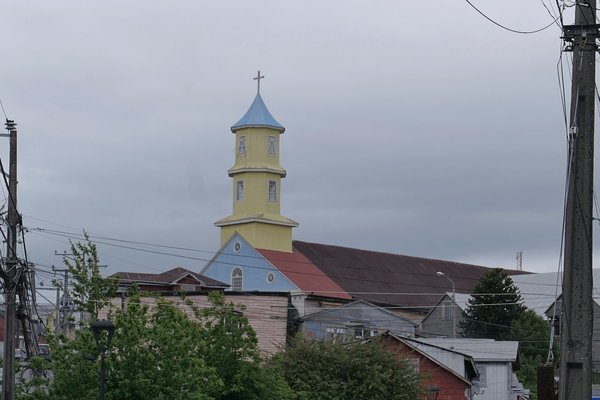Chile
Churches of Chiloé
The Churches of Chiloé are outstanding examples of the mestizo culture that resulted from Jesuit missionary activities.
Groups of missionaries would travel around the islands of the Chiloé archipelago. In each zone, they would build a church, looked after by local laymen for the rest of the year. This tradition was started by the Jesuits in 1608 and later continued by the Franciscans. European and indigenous cultural traditions were combined to create this unique form of wooden architecture.
Community Perspective: these churches are a great excuse to visit the beautiful surroundings of Chiloé and taste its excellent seafood. Nan visited 7 of them on public transport, Allan tackled 11 by rental car. Timonator (14/16) found out that they only have regular opening hours in January and February – the rest of the year, you have to look for someone with a key.
Site Info
Official Information
- Full Name
- Churches of Chiloé (ID: 971)
- Country
- Chile
- Status
-
Inscribed 2000
Site history
History of Churches of Chiloé
- 2000: Inscribed
- Inscribed
- Type
- Cultural
- Criteria
- ii
- iii
Links
- UNESCO
- whc.unesco.org
- Official
-
- monumentos.gob.cl — Iglesias de Chiloe
All Links
UNESCO.org
- whc.unesco.org — whc.unesco.org/
Official Website
- monumentos.gob.cl — Iglesias de Chiloe
News Article
- March 2, 2018 reuters.com — Chiloe islanders divided over Chile's giant bridge project
- Feb. 12, 2014 biobiochile.cl — ICOMOS looks at visual impact of Mall in Castro
Community Information
- Community Category
- Religious structure: Christian
Travel Information
Recent Connections
-
Perfect Inscriptions
2000 -
Pan-American Highway
Churches of Castro, Nercon -
Patagonia
By some definitions Chiloé Archipelago,…
Connections of Churches of Chiloé
- Individual People
-
-
Charles Darwin
Spent quite a while exploring Chilo?, and mentioned Castro church in his travel notes
-
- Geography
-
-
Patagonia
By some definitions Chiloé Archipelago, the rest of the Los Lagos Region, and part of the Los Ríos Region are also part of Patagonia (wiki) -
Pan-American Highway
Churches of Castro, Nercon -
Pacific Ocean
Church of Caguach lies directly at the
-
- History
-
-
Fusion
"fusion of European and indigenous cultural traditions"
-
- Architecture
-
-
Vernacular architecture
-
Wooden architecture
-
Gothic Revival
Church of San Francisco, CastroSee en.wikipedia.org
-
Italian Architects outside Italy
Eduardo Provasolli constructed the church of San Francisco in Castro -
Octagons
AB Evaluation "The tower is the dominating vertical feature, both as a religious element supporting the Cross and also as a beacon for sailors. are of two or three storeys, with hexagonal or octagonal drums to reduce wind resistance"
-
- Damaged
-
-
Hit by Tsunami
May 22 1960
-
- World Heritage Process
-
-
Perfect Inscriptions
2000
-
- Religion and Belief
- WHS on Other Lists
-
-
World Monuments Watch (past)
(1996)
-
- Timeline
-
-
Built in the 17th century
Earliest churches in this regional style date from the mid-seventeenth century. The 16 nominated ones are a bit younger (18th-19th century).
-
News
- reuters.com 03/02/2018
- Chiloe islanders divided over Chil…
- biobiochile.cl 02/12/2014
- ICOMOS looks at visual impact of M…
Recent Visitors
Visitors of Churches of Chiloé
- Alberto Rodriguez Gutierrez
- Alejandro Lau
- Allan Berry
- ALS
- Ammon Watkins
- Aspasia
- Badwater
- Bill Maurmann
- Bram de Bruin
- Brett Baumann
- Carlos Sotelo
- Chantal den Haan
- Cheryl
- Claire Bradshaw
- Ellen Nielsen
- Els Slots
- Emili Xaus
- Eva Kisgyorgy
- Fan Yibo
- Felicité
- Fernweh
- giloudepuertorico
- Iain Jackson
- Jarek Pokrzywnicki
- Jay T
- J_neveryes
- João Aender
- Jonas Kremer
- JoStof
- KateY
- Kbecq
- Kevin247
- kiank37
- Kurt Lauer
- Linz
- Loic Pedras
- Lucio
- Luis Filipe Gaspar
- lynnz317@aol.com
- Malgorzata Kopczynska
- Max
- Michael Ayers
- Michael Novins
- Michael Turtle
- Mihai Dascalu
- nan
- Patrik_globe
- Peltzi
- Pieter Dijkshoorn
- Reisedachs
- Reza
- Roman Bruehwiler
- Slavi
- Solivagant
- Ssong.x
- Tevity
- Thomas Buechler
- Thomas van der Walt
- Tim Allen
- Timonator
- Timothy C Easton
- Zoë Sheng
Community Reviews
Show full reviews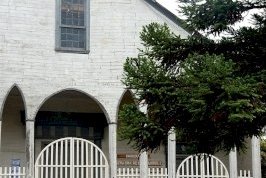
In 2012, I visited four of the sixteen UNESCO registered churches: San Francisco de Castro, Nuestra Señora de los Dolores de Dalcahue, Santa María de Loreto de Achao, and Señora de Gracia de Nercón.
When I visited, the Church of Senora de Garcia de Nercon had yet to be restored. When I compare the photos that I had taken in 2012 of the Church of Senora de Garcia de Nercon to the more recent photos I found online, I can see that the entirety of the church's steeple and outer walls of the main floor are reconstructions.
The churches of Chiloé, by themselves, may lack the brilliance and the scale of the world's grand churches, but these churches are to be best appreciated in their setting, that is to say, the quiet and moody atmosphere of the Chiloé archipelago.
Keep reading 0 comments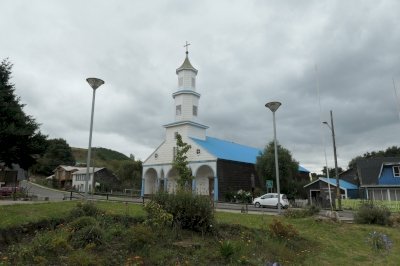
In a 5 day journey I have visited the Chiloé archipel with some friends with whom I have rented a car in Puerto Montt. With full insurance its quite expensive. We´ve paid around 76€ per day for the car but with 4 people it was worth the effort. The ferry to Chiloé costs 16€ for a car one way. We followed also the recommendations in this group that visiting all the churches without car will be quite complicated. In the end we visitied 14 out of 16 world heritage churches of which we could enter 8. We did not make it to the two more remote islands to which the ferry only goes once per day which means that you need to sleep there or organise a private ferry. Apparently there are 160 churches of the wood style with more or less Jesuit origin of which the more or less biggest communities and churches are the world heritage sites. We stayed 5 nights in Castro from where we visited all the churches which is easily possible as they are all within a 1 hour drive from the islands capital sometimes with ferry transfer in between.
Below follow the details I could find out about the churches as well as my opinions on them. Generally I must say a lot are quite similar and the joy of visiting many is more in driving around the island and discovering new places than being stunned by the new churches as many are …
Keep reading 0 comments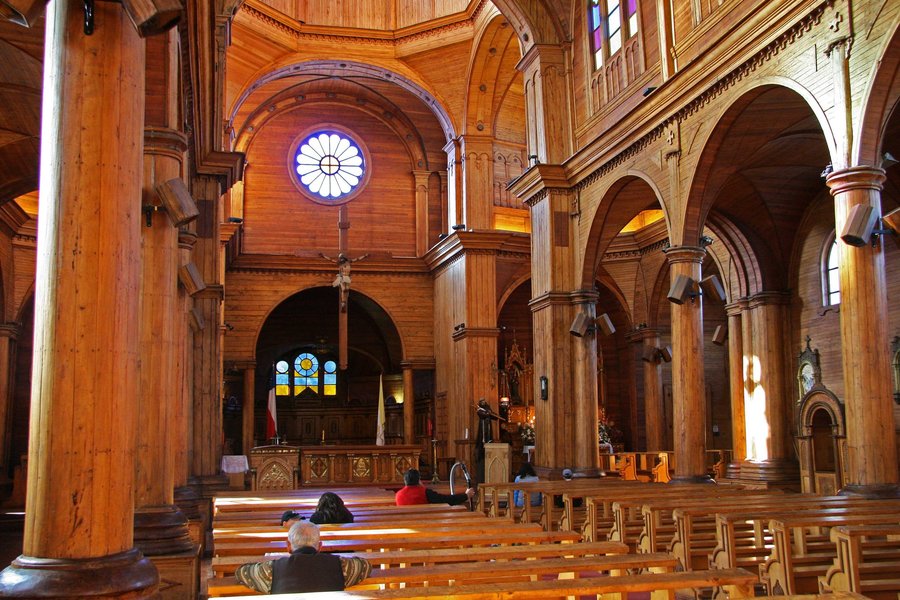
We visited the site in 2015. Many of the churches are quite spread out, and if you really want to see the best of what this site can offer, you’ll need to rent a car. We flew into Puerto Montt, and drove down. There’s been talk of connecting the island to the mainland by bridge for years now, but as far as I’m aware, that’s still not come to fruition, so be prepared to take a ferry.
The churches, like many things Latin America, are outwardly Christian, but with a strong local flavour. There’s a decently well signposted tourist trail, though be prepared for some tricky driving conditions. Not every WHS church is on the trail and not ever church on the trail is WHS, so if your time is limited, I recommend doing a bit of research ahead of travelling.
Castro makes a great central base from which to visit more remote islands. We stayed in a beautiful hostel in a palafito, a local style of stilthouse. The food was also spectacular, and unique to island.
All told, we visited 11 of the 16 churches. My personal favourite was Detif on the island of Lemuy, which is the furthest south, and requires an additional ferry to get too. Lemuy is Chiloe in micro, and an immensely relaxing way to spend half a day. You can visit a majority without leaving Chiloe proper, but I think you miss out on what makes the place special if you …
Keep reading 0 comments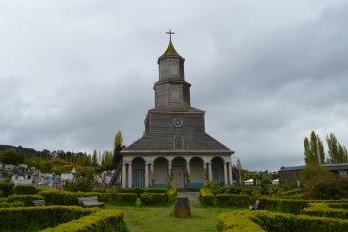
In October 2017, I made an easy, but long, day trip by bus from Puerto Montt to Castro, probably the best base from which to visit the wooden churches. One of the best wooden churches, the Church of San Francisco, is next to Castro's bus station. I arrived in Castro around 11:30 am, so was able to visit the interior of the church, which on the day of my visit was open from early morning to noon, closed early afternoon, and then reopened in the late afternoon.
Since I only had a few hours to visit several of the shingled churches, I booked a tour with Pehuén Expediciones (http://www.turismopehuen.cl), a local operator that I found while on my way for lunch at one of the restaurants in Castro's palafitos, traditional wooden stilt houses that sit above a tidal flat. There were other operators around the main square, and I expect they can set up similar day trips. I organized a few-hour tour (45,000 Chilean Pesos, approximately US$70) to visit three nearby wooden churches. We first drove around 20 minutes to the farthest church, the Church of Chonchi (I arrived around 2:30 pm and the interior was open). While heading back to Castro, we stopped at the Church of Vilupulli (it was locked, but my guide was able to drive to a local school and return with a neighbor who maintained the key; after our visit, we returned her to the school -- without a guide, I doubt I would have …
Keep reading 0 comments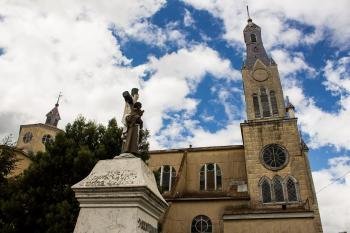
This is such a wonderful and peaceful part of Chile. Although the churches makes up the WHS, it's interesting to see the lifestyle here and all the small communities. Getting there is half the fun too on the ferry.
Keep reading 0 comments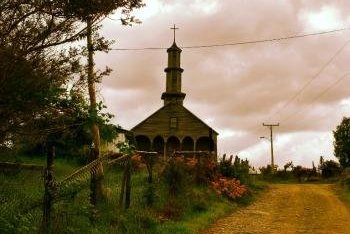
With the means available to them the Chiloens built several wooden churches on their islands. These are very simple structures substituting wood for stone. If you were to strip the decoration, the tower and the columns from the buildings you would end up with large barns. Still, the simplicity and the modest means have a distinctive charm worthwhile exploring.
During my visit of 2.5 days I was able to visit 7 of the 16 inscribed churches. Of these I was able to enter 3 (+1 view). I wasn’t able to find any information on the opening hours for most churches, so be ready to stand in front of closed doors. You may have more success if you join an organized tour.
Given our maps, locating the churches was not an issue at all:
- Castro: Currently (2016) undergoing renovations and not open to the public.
- Achao: Open from 10h to 15h. I was too late.
- Dalcahue: Wasn’t able to get in. Twice. Plenty of busses from Castro. Busses continue to both Tenaun and Achao.
- Tenaun: A bit remote and the road to Tenaun is terrible. They are constructing a new road, till then mind your car. You will probably be able to get in, though: The key is with a neighbor (leave a donation). Direct busses run from Castro via Dalcahue. Nice add on: You get a view of the snow covered Andes.
- Nercon: Nice church not far from Castro with a graveyard. The cleaning ladies …

I too only learned of Chiloé through the UNESCO website. On a recent trip to Chile a friend and me visited as many of the churches as we could while based in the beautiful "city" of Ancud. The churches' designs are surprisingly sophisticated and beautiful. These things were built with love and care. You should go.
Important: as with most UNESCO sites: pay attention to the area surrounding it - they make the best part of the trip! Chilotas* were friendly and their food delicious (try the traditional Curanto!) and their culture rich in myths and legends; some of them downright diabolical. I found it odd, but I realized that any area that has such a huge religious presence begets a reaction. This, however, I only found in the booklets with traditional myths and stories that you'll see in every park.
*Initially "locals" seemed a tad unfriendly and dry (although not rude) until we started meeting native Chilotas who complained that these people are from other regions and give Chilotas a bad name.
Keep reading 0 comments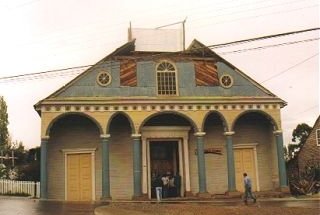
Wasn't it for the World Heritage List, I would never have heard of this place. It's left out often of Chile itineraries. Chiloe is a green island, or actually a number of islands, with a distinct culture and history.
During my Chile trip I stayed in Chiloe for a few days, both in Castro and Ancud, its main towns. I ate a lot of fish in little harbour restaurants. Salmon features prominently on the menu, for about five dollar you can have a delicious meal.
My most precious memories are of the day I spent driving around the islands, looking for old or remarkable churches. I picked up a Czech hitchhiker on the way, who was much better informed about the churches than I. I think we found six that day, in hidden towns at the end of gravel roads.
Keep reading 0 comments
